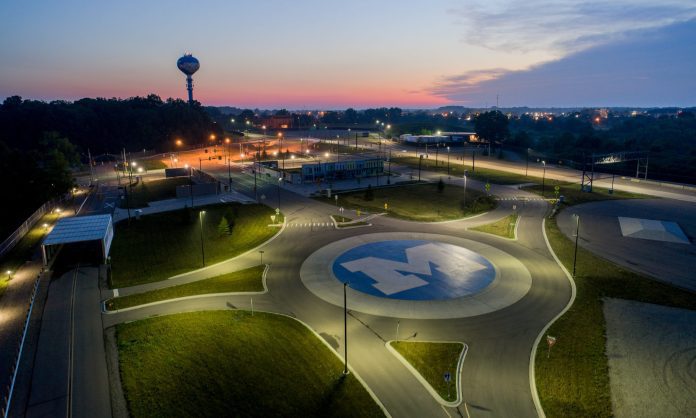Verizon and Honda are testing how new edge-based 5G could ensure reliable connectivity between road infrastructure, vehicles, and pedestrians. The pair are working at the University of Michigan’s Mcity, a test bed for connected and autonomous vehicles, on the project, with a view to “reducing collisions and saving lives”.
US operator Verizon is providing the 5G connectivity and mobile edge computing (MEC) into the bargain, as well as its “hyper-precise location’ services”; Japanese car maker Honda is providing the automotive safety platform, in the form of its SAFE SWARM platform, which uses cellular vehicle-to-everything (C-V2X) to share data about the location and speed of traffic, as well as other vehicle sensor data.
The initial tests will use the platform to issue road-alerts, initially, about emergency vehicles, pedestrian crossings and “red light runners”. Honda has a vision for a “collision-free society”, according to a press statement. The project seeks to reduce the need for AI on vehicles, by bringing the compute functions to the mobile edge, and into the vicinity of road users, to lower transmission latencies and increase bandwidth “when seconds matter most”.
Specifically, Honda and Verizon explored three safety scenarios: a pedestrian scenario, where smart cameras detect a pedestrian at a blind road intersection, and issue a “visual warning message” to approaching drivers “of the potential danger”; an emergency vehicle scenario, where, again, a safety message is issued to a driver whose in-car audio has drowned-out the siren from an approaching blue-light vehicle; ; and a red-light runner scenario, where the warning is issued to nearby road traffic when a vehicle fails to stop at a red light
A statement from the companies said: “Each research scenario demonstrates the potential of 5G and MEC to communicate urgent safety messages between vehicles and infrastructure, reducing the need for complex computing onboard each connected vehicle. In the future, this connected vehicle technology could help ensure that autonomous vehicles will be able to communicate seamlessly.”
Ehsan Moradi Pari, research group lead in Honda’s advanced technology research division, said: “[This] is an important step in our multi-year effort to develop connected vehicle safety technology to realize our vision for a collision-free society. While the research is preliminary and not intended as a product feature at this time, 5G-enabled vehicle communication and MEC have the potential to advance safety for everyone sharing the road.”
Sanyogita Shamsunder, vice president of technology development at Verizon, said: “The ability to move computing power to the edge of [the] 5G network is an essential building block for autonomous and connected vehicles, helping cars to communicate with each other in near real-time and with sensors and cameras installed in streets and traffic lights.”
Separately, on the private networking and industrial IoT front, Verizon has been busy.
The firm said this week its business division has struck a deal with AWS in the US to deliver private 5G networks for enterprises. Verizon and AWS launched MEC services in Boston and the Bay Area in August 2020. By moving AWS compute and storage services to the edge of Verizon’s 5G network, the companies said, innovators can develop applications with ultra-low latencies that will support next generation use cases ranging from self-driving cars to autonomous industrial equipment.
The pair has made 5G-based edge computing available via Wavelength Zones in 10 cities in the US. The new managed private MEC solution can support additional applications in the industrial space such as autonomous mobile robots (AMRs), predictive maintenance, quality assurance and near real-time monitoring and hazard alerts, they said.
Corning is the first enterprise to test out the private MEC solution. The company will use the private MEC solution to support autonomous mobile robots to “demonstrate how manufacturers can increase efficiency.”
Outside of the US, Verizon’s business division has picked up work with the Port of Southampton in the UK. The deal, with Associated British Ports in the UK, is its first European private 5G contract. Nokia is providing the networking infrastructure, as part of the deal it struck with Verizon in October to supply enterprises with private 5G in Europe and Asia Pacific. ABP has a shared access licence from Ofcom for band n77 at 3300–3800 MHz. Verizon Business said the deployment will be a “completely dedicated edge compute infrastructure”.

